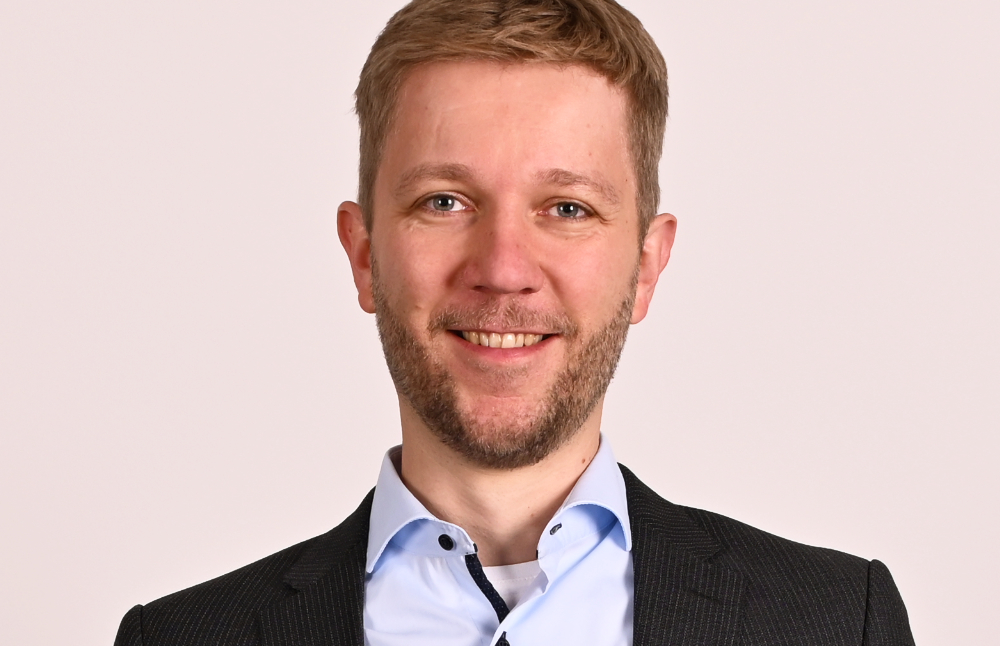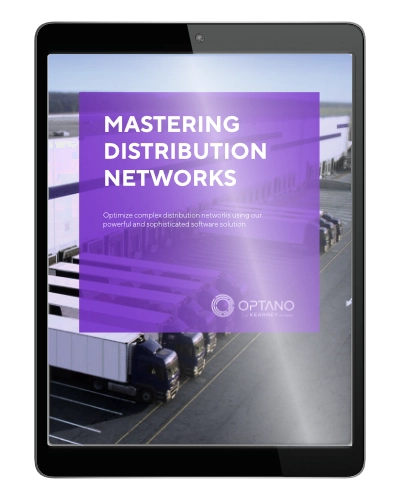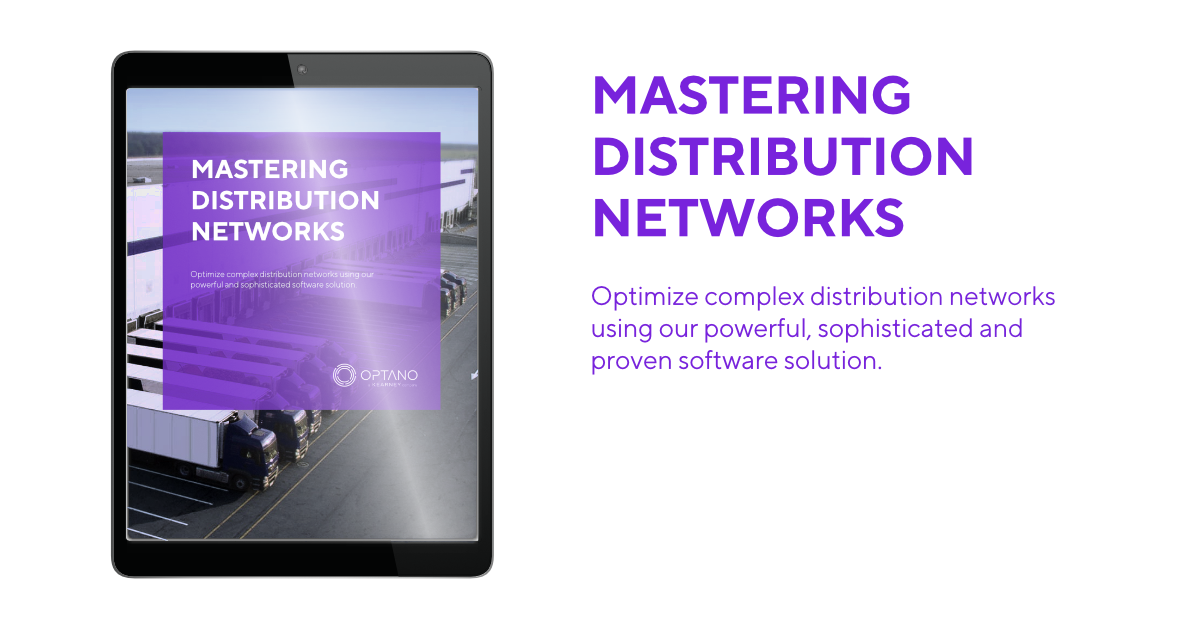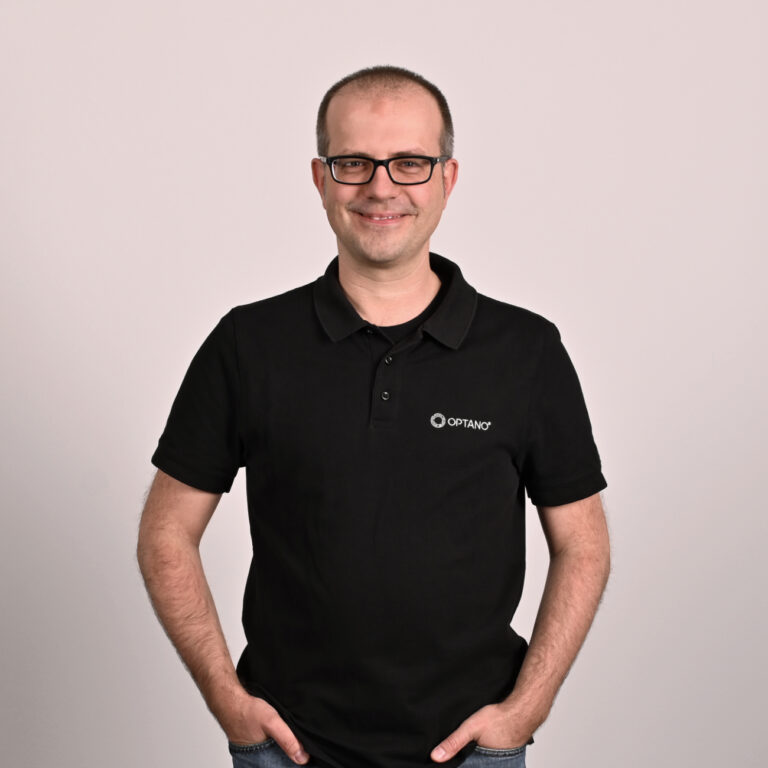Getting the optimum out
of your distribution network
In our blog “Optimization potential in distribution networks”, we focused on how intelligent planning methods contribute towards better decision-making and increased competitiveness in distribution networks.
In this interview, OPTANO’s Head of Products, Dr. Dominik Hollmann, gives us a fascinating insight into how the magic of optimization works and explains how, with OPTANO’s support, business can get the optimum out of their distribution networks.
What are common challenges when it comes to designing and operating a distribution network?

The primary challenge is, of course, to ensure efficient and reliable product delivery to customers. Let’s take a retailer with a lot of stores that are distributed throughout Germany, for example. These stores rely on distribution centers for their product supply. The retailer has to strategically locate these for delivery speed, on-demand availability, as well as cost-effectiveness. However, managing a large distribution network becomes more complex with the number of stores, product variety, customer demands, and service level requirements. The retailer has to balance all these factors. At the same time, maintaining low prices and high service levels is crucial for its success.
These are the “classic” challenges, though. In recent years, consumer behavior has changed and companies have had to make major readjustments to keep up with these developments. This has created even more challenges and made the networks more complex.
Mathematical Optimization can achieve what we, as humans, or manual methods cannot
Can you elaborate on this last point? What exactly are these new developments?

Consumers have very high expectations these days. We no longer need to go into a store and make do with what is available on the shelf. We can order virtually anything online and it is there the next day. The convenience of online shopping has disrupted traditional distribution models – omnichannel networks, which combine online ordering with in-store pickup or home delivery, have become essential for retailers to remain competitive. And so these have also led to new challenges: in particular increased transportation costs due to more frequent and individual deliveries.
Another development has been the rise in fuel prices and the increased awareness for the carbon footprint in the last few years. Now the focus has shifted from minimizing labor costs to optimizing transportation in order to reduce fuel consumption and consequently CO2 emissions, and to bring goods closer to customers.
How can companies manage this complexity and to what extent can optimization be of support?

Network expansion inevitably leads to increased complexity. A growing network of stores requires more distribution centers to cater to their needs. As a result, your network will also accumulate even more data and it becomes difficult, if not impossible, to maintain an overview.
In principle, you can make a lot of calculations to identify the cost drivers in your network. You can also calculate the cost of two different network configurations to determine which one is better. But there are two issues here: First, you need to do a lot of math (and collect and analyze a whole mass of data). Secondly, there is a nearly infinite number of network configurations. If you want to find a solution by applying manual processes such as Excel, you will discover that they reach their limits very quickly – particularly when the networks are so large and complex.
Mathematical optimization can achieve what we, as humans, or Excel, cannot: it is able to take into account so many more aspects of the data in a network and run through an infinite number of options to find the best one.
For example: Imagine you are structuring a network and have identified 100 potential locations at which to position distribution centers. You want to select 8-12 locations for your future network that come as close as possible to meeting all your requirements, e.g. distance to the stores, available labor, size, facility costs, possible legal restrictions, taxes, etc.
You could imagine optimization as being a bit like an algorithm that tries out all possible configurations for the network, simulates the network to calculate its costs, and in the end knows which one has lowest costs and therefore is the best solution. In reality, it’s a bit more complex than that, as trying out all possible networks would take a long time.* So, this is where mathematical optimization works its magic: it can help you achieve the optimal result as if it had tested all of the combinations, without having to actually do so – and it does this extremely fast thanks to ML and Advanced Analytics methods that run in the background.
*During the interview, to illustrate just how infinite the options are, Dominik calculated that for 8-12 locations out of 100, there are 1,211,44,.484,909, 440 different network possibilities.

How does OPTANO implement an optimization project for a distribution network?

OPTANO’s optimization solution can help companies plan their distribution networks efficiently to help them reach their targets. Before we implement the product in a company, we first hold a workshop where we help the company define all objectives, variables and constraints which need to be taken into account in the business model. To do this, we need the company’s data. Often, this isn’t always readily available, so we assist the companies in identifying and collecting the relevant data. We also help with IT integration, if necessary. Once this is done, we can build the business model in which we map the customer’s current network.
After the product has been integrated into the company’s operations, the objective is to empower future users to use it in their planning processes. Therefore, the next step in any project is to provide comprehensive training. Of course, we support the users extensively in the initial stages and remain in close contact beyond implementation to ensure a smooth transition and successful adoption of the software.
The more complex a network is, the better, because behind the complexity there is a lot of hidden potential.
How does a company benefit from using OPTANO?

A significant benefit for users is the transparency that OPTANO generates. For us, the more complex a network is, the better, because behind the complexity is a lot of hidden potential. OPTANO allows you to identify this potential by giving you an overview of your entire network. This transparency helps you streamline processes and increase efficiency.
A special feature of OPTANO is also our what-if scenarios. These let you simulate the effects of strategic and tactical decisions on your network. For example, you can evaluate the consequences of an increased service-level promise on your network or the effects of higher transportation costs. What-if scenarios are highly effective as they facilitate even the most complex decision-making process.
Finally, customization is one of OPTANO’s particular strengths. We understand that each customer has distinct business and project-specific requirements, so we tailor our product to meet their unique requirements. For instance, a car manufacturer aiming for global expansion would need to factor in import and export customs duties, whereas a European furniture supplier would not. Our platform caters to even the most specialized requirements, and this is what sets us apart from the competition.
What do you enjoy most about working on optimization projects?

Collaborating with our customers to find creative solutions gives me a great sense of satisfaction. I enjoy transforming the customers‘ real-world challenges and requirements into a model, factoring in constraints and making strategic simplifications. The culmination of a project, and knowing that the software meets or even exceeds the customers’ expectations, is a highly rewarding experience – not just for me but for the whole team.
Dominik, thank you very much for sharing your thoughts on this subject with us.
And if you are interested in OPTANO’s solutions for distribution networks, feel free to download our factsheet.
Have you read our Factsheet on this topic?

Distribution networks are complex and present retailers and producers with a variety of challenges. They have to guarantee the availability of goods on omni-channel sales channels, deliver in the fastest possible time and work at the lowest possible cost. In this factsheet, we show the possibilities offered by the OPTANO solution for distribution networks.
To obtain our factsheet, all you need to do is enter your contact details in the space below. A pop-up window will then open to download the whitepaper. Please note that by providing us with your email address, you agree that we may contact you on this topic. You may revoke this agreement at any time by contacting [email protected].




